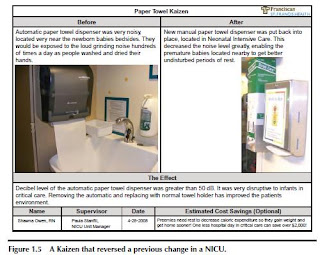#TPSER8 At the final session of the Telluride Patient Safety Camp today, co-organizer David Mayer (who, by the way, is the recently appointed vice president of quality and safety for MedStar Health) set forth a goal for the future. Someday, he suggested, the first question of residents arriving at any hospital will be "Where do I report?" safety and quality issues.
Why is this important? Simply, no organization can succeed at continuous improvement without a mechanism for recognizing where it is not doing well or well enough. Only those hospitals that cherish the opportunity to learn not only from adverse events, but also from near misses, work-arounds, and plain old inefficiencies in the delivery of clinical care will rise to a level of high quality and will maintain that level. Residents have a key role in this because of their many hours of clinical duty in hospitals. They, especially as incoming interns, have the fresh eyes to see things that long-term attending physicians and nurses no longer see. An organization needs to hold itself accountable to the standard of care it has set for itself, and the residents play a central role in ensuring that this happens.
Speaking of today's hospitals, David said, "A record of sustained reports on quality and safety is an indication of deep organizational commitment to improvement."
So, I take David's hope for the future and offer it as a simple metric of hospital quality and safety today. I suggest that medical students who are applying for residency positions during the match process should ask the same question, followed by a few others, "Where will I report quality and safety issues?" "How and by whom will those reports be received and evaluated?" "How and when will I hear back as to whether changes resulted from reports I submit?" "How will the story of those improvements be spread so that other floors or units will be able to learn of them and adapt those lessons throughout the hospital?"
Why is this important? Simply, no organization can succeed at continuous improvement without a mechanism for recognizing where it is not doing well or well enough. Only those hospitals that cherish the opportunity to learn not only from adverse events, but also from near misses, work-arounds, and plain old inefficiencies in the delivery of clinical care will rise to a level of high quality and will maintain that level. Residents have a key role in this because of their many hours of clinical duty in hospitals. They, especially as incoming interns, have the fresh eyes to see things that long-term attending physicians and nurses no longer see. An organization needs to hold itself accountable to the standard of care it has set for itself, and the residents play a central role in ensuring that this happens.
Speaking of today's hospitals, David said, "A record of sustained reports on quality and safety is an indication of deep organizational commitment to improvement."
So, I take David's hope for the future and offer it as a simple metric of hospital quality and safety today. I suggest that medical students who are applying for residency positions during the match process should ask the same question, followed by a few others, "Where will I report quality and safety issues?" "How and by whom will those reports be received and evaluated?" "How and when will I hear back as to whether changes resulted from reports I submit?" "How will the story of those improvements be spread so that other floors or units will be able to learn of them and adapt those lessons throughout the hospital?"
 |
| Photo at Bear Creek Falls by Tim McDonald |












































